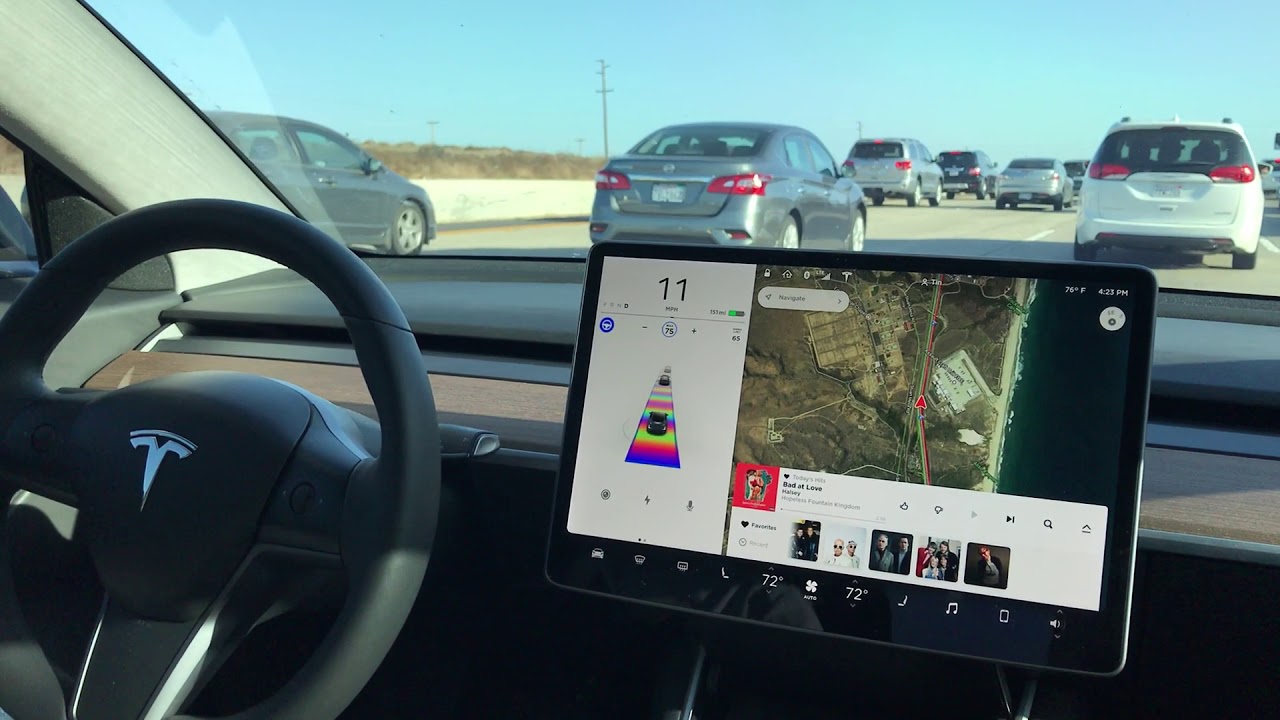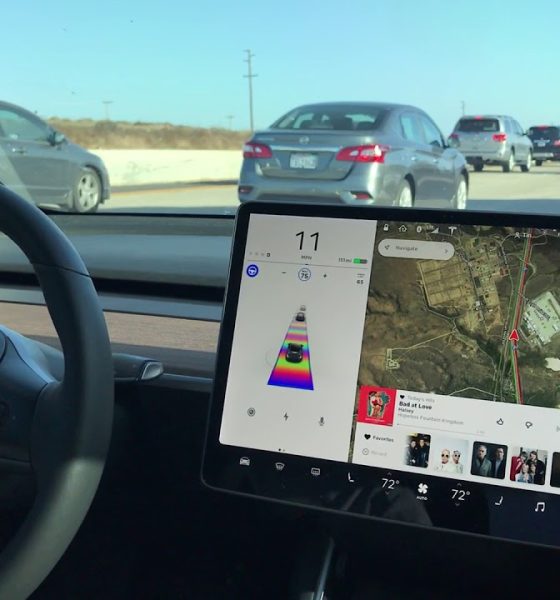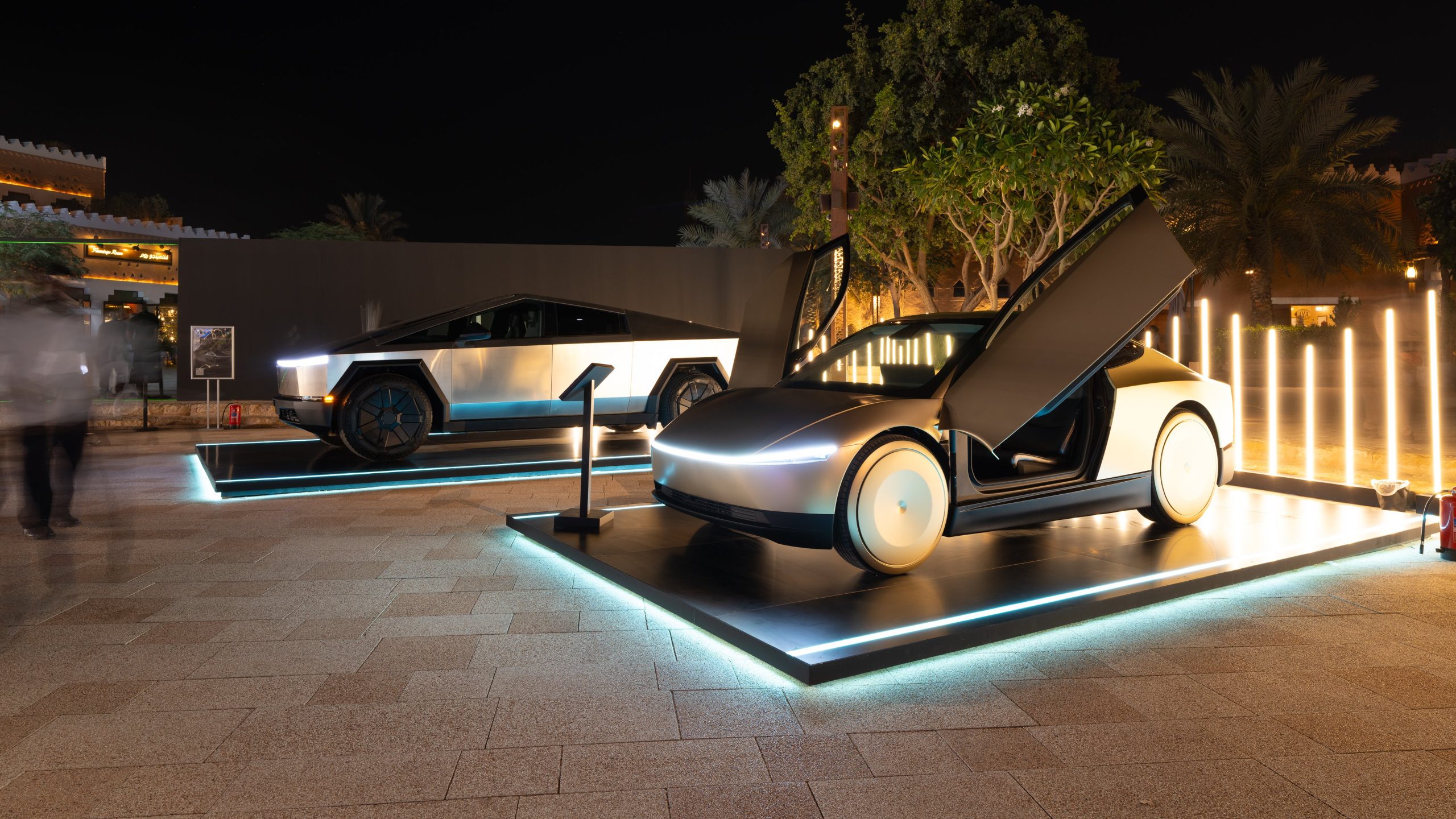

Investor's Corner
Tesla at $420 is a bargain considering its Autopilot data is key to a self-driving future
Questions continue to swirl around the fate of Tesla stock (NASDAQ:TSLA) as the market waits for updates about Elon Musk’s initiative to make the company private. Tesla’s privatization, provided that it does go through, will be the largest one in history, amounting to around $70 billion at Musk’s target of $420 per share. While this amount is substantial, $420 is actually a pretty good deal for Tesla’s would-be funding partners, considering the volume of Autopilot data the company has gathered from its Model S, Model X and Model 3 fleet.
Tesla’s possible privatization has caused wild swings in Tesla’s stock price, though not too far a departure from its usual volatility. Upon Musk’s announcement, shares climbed up 11%, before falling back as reservations emerged from critics about the plausibility of the company’s privatization. On Thursday’s after-hours, Tesla stock recovered some of its losses as the company’s board of directors issued a statement stating that they would formally review Musk’s plans.
Gene Munster, Managing Partner at Loup Ventures believes that there is more than a 50% chance that Tesla would become a private company. Munster noted that while concerns about the possible repercussions of Musk’s go-private Twitter announcement might affect the stock, the effects would only be felt at the very short-term. Ultimately, the venture capital firm believes that neither Tesla nor Elon Musk is at legal risk, especially since the company stated on a 2013 Form 8-K that social media might be used as an outlet for disseminating company information. Loup Ventures also estimates that Tesla would need around $25-$30 billion to take the electric car and energy company private.
If Loup Ventures’ calculations prove accurate, the entities providing the company with the funding to go private would be getting quite a deal at $420 per share. Apart from Tesla’s electric car and energy business — both of which are growing at an immense rate — investors would also be buying into a company that holds what could very well be automotive world’s most extensive amount of real-world driving data. As of July, a report from MIT’s Lex Fridman estimated that Tesla had acquired around 1.2 billion miles on Autopilot and approximately 7.8 billion miles in Autopilot “Shadow Mode.”
In comparison, Waymo’s fleet of vehicles have driven a total of 5 million real-world miles in self-driving mode and an additional 5 billion miles in simulation as of May this year. GM Cruise, another leader in self-driving technology, does not release the numbers of its fleet, but accident and disengagement reports based on autonomous miles driven provide a rough estimate of the miles Cruise’s vehicles have traveled so far. Between June 2015 and November 2017, the California Department of Motor Vehicles estimated that GM Cruise’s self-driving cars covered a total of 141,691 miles in CA. Morgan Stanley analyst Adam Jonas estimates Waymo to be worth $175 billion. GM Cruise, on the other hand, is valued at $11.5 billion after securing more funding from Softbank’s Vision Fund earlier this year.
Tesla’s development of self-driving technologies has taken a backseat in the media coverage of the company, particularly during the past year as the company struggled with the Model 3 ramp. Regardless of this, Keith Wright, a professor from Villanova University, notes that Elon Musk’s decision to invest heavily in AI would likely pay off soon. Among the participants in the self-driving race, Tesla is the company with the most real-world experience. Elon Musk once noted that it would likely take around 6 billion real-world miles before regulators would approve self-driving technology. So far, Tesla is the company closest to that mark.
Tesla’s focus on data gathered from real-world miles was emphasized by Nidhi Kalra, a senior information scientist for the RAND Corporation, a nonprofit research organization. According to the information scientist, simulations such as the ones used by Waymo to train its fleet of autonomous vehicles are a “simplification” of the real world.
“The problem with any simulator is that it’s a simplification of the real world. Even if it stimulates the world accurately, if all you’re simulating is a sunny day in Mountain View with no traffic, then what is the value of doing a billion miles on the same cul-de-sac in Mountain View? I’m not saying that’s what anyone’s doing but without that information we can’t know what a billion miles really means. Real-world miles still really, really matter. That’s where, literally, the rubber meets the road, and there’s no substitute for it,” Kalra said.

And Tesla is just getting started. In Tesla’s Q2 2018 earnings call, the company provided an update on its efforts to develop its own self-driving hardware. According to Pete Bannon, who leads the development of Hardware 3, the company’s new hardware is different from the industry standard.
“We did a survey of all of the solutions that were out there for running neural networks, including GPUs. We went and talked to other people like at ARM that were building embedded solutions for running neural networks. And pretty much everywhere we looked, if somebody had a hammer, whether it was a CPU or a GPU or whatever, they were adding something to accelerate neural networks. But nobody was doing a bottoms-up design from scratch, which is what we elected to do.”
“We had the benefit of having the insight into seeing what Tesla’s neural networks looked like back then and having projections of what they would look like into the future, and we were able to leverage all of that knowledge and our willingness to totally commit to that style of computing to produce a design that’s dramatically more efficient and has dramatically more performance than what you can buy today.”
Tesla could very well be approaching its most significant turning point in years. Regardless of whether Tesla becomes private or not, one thing seems sure — once Tesla starts rolling out its first full self-driving features, and once Hardware 3 makes it to the company’s fleet, leaders in the self-driving industry would probably be forced to recognize the presence of a new, possibly dominant player.
Disclosure: I have no ownership in shares of TSLA and have no plans to initiate any positions within 72 hours.

Investor's Corner
SpaceX IPO is coming, CEO Elon Musk confirms
However, it appears Musk is ready for SpaceX to go public, as Ars Technica Senior Space Editor Eric Berger wrote an op-ed that indicated he thought SpaceX would go public soon. Musk replied, basically confirming it.

Elon Musk confirmed through a post on X that a SpaceX initial public offering (IPO) is on the way after hinting at it several times earlier this year.
It also comes one day after Bloomberg reported that SpaceX was aiming for a valuation of $1.5 trillion, adding that it wanted to raise $30 billion.
Musk has been transparent for most of the year that he wanted to try to figure out a way to get Tesla shareholders to invest in SpaceX, giving them access to the stock.
He has also recognized the issues of having a public stock, like litigation exposure, quarterly reporting pressures, and other inconveniences.
However, it appears Musk is ready for SpaceX to go public, as Ars Technica Senior Space Editor Eric Berger wrote an op-ed that indicated he thought SpaceX would go public soon.
Musk replied, basically confirming it:
As usual, Eric is accurate
— Elon Musk (@elonmusk) December 10, 2025
Berger believes the IPO would help support the need for $30 billion or more in capital needed to fund AI integration projects, such as space-based data centers and lunar satellite factories. Musk confirmed recently that SpaceX “will be doing” data centers in orbit.
AI appears to be a “key part” of SpaceX getting to Musk, Berger also wrote. When writing about whether or not Optimus is a viable project and product for the company, he says that none of that matters. Musk thinks it is, and that’s all that matters.
It seems like Musk has certainly mulled something this big for a very long time, and the idea of taking SpaceX public is not just likely; it is necessary for the company to get to Mars.
The details of when SpaceX will finally hit that public status are not known. Many of the reports that came out over the past few days indicate it would happen in 2026, so sooner rather than later.
But there are a lot of things on Musk’s plate early next year, especially with Cybercab production, the potential launch of Unsupervised Full Self-Driving, and the Roadster unveiling, all planned for Q1.
Investor's Corner
Tesla Full Self-Driving statistic impresses Wall Street firm: ‘Very close to unsupervised’
The data shows there was a significant jump in miles traveled between interventions as Tesla transitioned drivers to v14.1 back in October. The FSD Community Tracker saw a jump from 441 miles to over 9,200 miles, the most significant improvement in four years.

Tesla Full Self-Driving performance and statistics continue to impress everyone, from retail investors to Wall Street firms. However, one analyst believes Tesla’s driving suite is “very close” to achieving unsupervised self-driving.
On Tuesday, Piper Sandler analyst Alexander Potter said that Tesla’s recent launch of Full Self-Driving version 14 increased the number of miles traveled between interventions by a drastic margin, based on data compiled by a Full Self-Driving Community Tracker.
🚨 Piper Sandler reiterated its Overweight rating and $500 PT on Tesla $TSLA stock
Analyst Alexander Potter said FSD is near full autonomy and latest versions showed the largest improvement in disengagements, from 440 miles to 9,200 miles between critical interventions pic.twitter.com/u4WCLfZcA9
— TESLARATI (@Teslarati) December 9, 2025
The data shows there was a significant jump in miles traveled between interventions as Tesla transitioned drivers to v14.1 back in October. The FSD Community Tracker saw a jump from 441 miles to over 9,200 miles, the most significant improvement in four years.
Interestingly, there was a slight dip in the miles traveled between interventions with the release of v14.2. Piper Sandler said investor interest in FSD has increased.
Full Self-Driving has displayed several improvements with v14, including the introduction of Arrival Options that allow specific parking situations to be chosen by the driver prior to arriving at the destination. Owners can choose from Street Parking, Parking Garages, Parking Lots, Chargers, and Driveways.
Additionally, the overall improvements in performance from v13 have been evident through smoother operation, fewer mistakes during routine operation, and a more refined decision-making process.
Early versions of v14 exhibited stuttering and brake stabbing, but Tesla did a great job of confronting the issue and eliminating it altogether with the release of v14.2.
Tesla CEO Elon Musk also recently stated that the current v14.2 FSD suite is also less restrictive with drivers looking at their phones, which has caused some controversy within the community.
Although we tested it and found there were fewer nudges by the driver monitoring system to push eyes back to the road, we still would not recommend it due to laws and regulations.
Tesla Full Self-Driving v14.2.1 texting and driving: we tested it
With that being said, FSD is improving significantly with each larger rollout, and Musk believes the final piece of the puzzle will be unveiled with FSD v14.3, which could come later this year or early in 2026.
Piper Sandler reaffirmed its $500 price target on Tesla shares, as well as its ‘Overweight’ rating.
Investor's Corner
Tesla gets price target boost, but it’s not all sunshine and rainbows

Tesla received a price target boost from Morgan Stanley, according to a new note on Monday morning, but there is some considerable caution also being communicated over the next year or so.
Morgan Stanley analyst Andrew Percoco took over Tesla coverage for the firm from longtime bull Adam Jonas, who appears to be focusing on embodied AI stocks and no longer automotive.
Percoco took over and immediately adjusted the price target for Tesla from $410 to $425, and changed its rating on shares from ‘Overweight’ to ‘Equal Weight.’
Percoco said he believes Tesla is the leading company in terms of electric vehicles, manufacturing, renewable energy, and real-world AI, so it deserves a premium valuation. However, he admits the high expectations for the company could provide for a “choppy trading environment” for the next year.
He wrote:
“However, high expectations on the latter have brought the stock closer to fair valuation. While it is well understood that Tesla is more than an auto manufacturer, we expect a choppy trading environment for the TSLA shares over the next 12 months, as we see downside to estimates, while the catalysts for its non-auto businesses appear priced at current levels.”
Percoco also added that if market cap hurdles are achieved, Morgan Stanley would reduce its price target by 7 percent.
Perhaps the biggest change with Percoco taking over the analysis for Jonas is how he will determine the value of each individual project. For example, he believes Optimus is worth about $60 per share of equity value.
He went on to describe the potential value of Full Self-Driving, highlighting its importance to the Tesla valuation:
“Full Self Driving (FSD) is the crown jewel of Tesla’s auto business; we believe that its leading-edge personal autonomous driving offering is a real game changer, and will remain a significant competitive advantage over its EV and non-EV peers. As Tesla continues to improve its platform with increased levels of autonomy (i.e., hands-off, eyes-off), it will revolutionize the personal driving experience. It remains to be seen if others will be able to keep pace.”
Additionally, Percoco outlined both bear and bull cases for the stock. He believes $860 per share, “which could be in play in the next 12 months if Tesla manages through the EV-downturn,” while also scaling Robotaxi, executing on unsupervised FSD, and scaling Optimus, is in play for the bull case.
Will Tesla thrive without the EV tax credit? Five reasons why they might
Meanwhile, the bear case is placed at $145 per share, and “assumes greater competition and margin pressure across all business lines, embedding zero value for humanoids, slowing the growth curve for Tesla’s robotaxi fleet to reflect regulatory challenges in scaling a vision-only perception stack, and lowering market share and margin profile for the autos and energy businesses.”
Currently, Tesla shares are trading at around $441.








